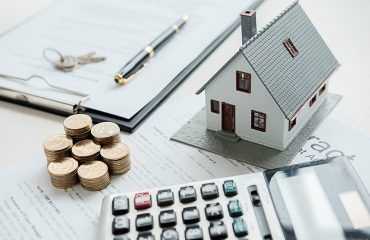History of Pakistan real estate
History of Pakistani real estate is a very important topic if we want to learn the real forces that affect, that affect real estate. Pakistan’s high population and rural-urban migration offer huge investment opportunities for real estate. As more and more residents flock to cities for jobs, real estate prices continue to skyrocket. The real estate sector generates high levels of direct employment and also generates demand in more than 50 side sectors, such as steel, brick, cement, paint and other building materials.
According to the most recent World Bank estimates, Pakistan’s real estate economy contributes 60-70% of the country’s wealth around the equivalent of $ 700 billion. While some other sources suggest more than $ 1200 billion. It is very difficult to estimate the real value of real estate because 80% of the wealth is undocumented.
“The combined direct contribution of construction and housing sectors to the country’s GDP has been consistently higher than 9 percent over the past decade,” – State Bank of Pakistan report.
The old saying ‘as safe as houses is still true. Real estate investing is the safest, and also the most profitable, of investments. Savings give a bad return and while stocks and shares can be much better, is it worth risking when your money could be wiped out overnight? So the smart investor knows where it is most profitable.
The Birth of Pakistan Real Estate Market
Pakistan’s economy has always depended on real estate. Since its inception and independence, socioeconomic urban migration has prompted demand for comprehensive construction projects. As more and more people moved from villages to the city after independence, real estate investors took on the need for housing and infrastructure to support the new residents.
The growth of the real estate sector as an industry in Pakistan was started by Karachi. The real estate in Karachi existed even before the independence of Pakistan. It began with the construction of buildings by barons and the sale of plots was very rare.
Bad policies and lack of pre-planning have only added to land premiums in urban areas. Where once political instability and lack of government oversight, often crashed the market. With more government regulation, prices are more stable and have marked a long period of consistency.
The 1950’s to 1980’s
Karachi saw the first influx of urban migration and a slow and steady increase in real estate. Karachi South district has become the backbone of Pakistan’s real estate industry. DHA Karachi was created in the 1950s and took control of good investment returns for reasonable prices by gaining further momentum in the 1960s.
The market continued to grow with Bhutto’s introduction of an Amnesty Scheme in 1973, which created real estate. However post-election riots and a catastrophic flood in DHA then shattered the market in 1977. In the same decade Lahore Cantt cooperative society, later DHA Lahore is created.
After a bad economic start of the 80s, international attention was focused on Pakistan with the start of the Afghan War. The war attracted moral and financial support from all over the world, which strengthened the market until the sudden death of then-president Gen Zia ul Haq in a plane crash in 1988. The ensuing political uncertainty fell back on the market.
The 1990’s
The 1990s played a very important role in the history of Pakistani real estate. 90s founded the foundation of real estate as we see it today. It began with a slow recovery and house prices prospered from 1992 to 1994 at an average rate. The smart investors understood the true potential of the real estate purchase. The purchase of business plots began to attract people from all parts and newer companies emerged.
After a few years of slowdown, it picked up again in the middle of the decade, only to be hit by the catastrophic rains and powerful crisis of 1997. This recession lasted until 2001.
Without some proper regulations and taxes, real estate has become the biggest tool in Pakistan in the 90’s and 2000’s for those who aim to invest undeclared money.
The 2000’s
Property began thundering after the 9/11 incident, breaking all previous records. However, the bubble burst before 2005. Overflowing prices ensured that the majority of the population could not afford to own their own home. Much of the boom in the 1990s and 2000s is attributed to the participation of white-collar buyers, tax-free and undocumented money. The difference between the DC values and real estate has grown numerous during this point and has resulted in real estate a hot spot of undocumented money. In some companies, the DC values did not even represent 20% of the actual values of the asset. This made it easier for people who wanted to invest untaxed sums in real estate. The huge investor resumes also to ensure the continuation of the trend.
The Government failed to take appropriate action either out of negligence or slowly. Pakistan’s real estate has become a tax haven and speculative plot trading has become the most preferred investment.
The 2010’s
After a slow recovery from overpricing, the market rose again to surpass all previous records in 2013. Later in the same decade, we saw profitability reach new highs by the end of 2015. In 2015, investment in residential houses (apartments, houses and vacant plots) increased at five to seven percent, while in commercial property (including stand-alone shops, showrooms, retail and office space), there was an increase of 15 to 20% across Pakistan, despite the Capital Gains Tax, Capital Gains Tax and Stamp Duties in the Federal Republic Budget 2014-2015.
In 2016, everything changed as the federal government approved an amendment to the 2001 Finance Bill to try to regulate the market with rates approved by DC. The Finance Act 2018 introduced important measures to minimize cases of use of the real estate market as a way to avoid taxes as well as money laundering. This was an effort to counter unregistered and undocumented investments but actually slowed the market. The Government has begun to increase DC values annually to close the gap after years of rampant growth and tax fraud.
Because no government has taken action for years, much of the documented white economic investment has fallen into the gray economy. Instead of investing in the manufacturing industry, investors shifted their investments to unproductive plots trading, and investors ’money eventually stalled.
In addition, the record appreciation of Dollar against PKR in 2018 & 19 has lowered the market at least 50% from its 2015-16 high.
Conclusions:
All over the world the real estate industry generally follows a steady growth rate of 5 to 8% per year. However, while studying the history of Pakistani real estate we found out that during bullish trends the figures swell up to 40 to 60% growth rate per year. So why this? Well, when we analyze the historical data, the reason becomes obvious. The periods of recession are a direct result of over-pricing. The patterns of market trends have remained the same over the 43 years of Pakistan’s 69-year history of real estate. There is usually a period of 4-5 years between the peak of the recession and the peak of the boom. The proportion of average price increase per year in populated areas is 4 to 5 percent. However, for uninhabited areas, this is about 9 to 10 percent.
When a recession begins, prices in populated areas usually fall from 0.5 to 1 percent and the prices of unpopulated areas fall to almost 5% or even up to 50% of the previously increased price. The inhabited areas represent the real end-user market, while uninhabited areas have become a hive of speculative investment.
The uninhabited / under-developed areas such as plots or files more or less acted as stocks, showing a lot of volatility. On 3 different occasions in the last 2 decades, they have given unprecedented gains, but over a long period of time, they have shown either zero or negative growth. Residents or developed areas remained stable overall and combined with rental income, they probably gave better incomes in all circumstances.
The Government has maintained a policy of “no questions asked” about the source of capital, and for decades the sector has remained the ideal place to park black money. This has led to the creation of a real estate bubble with artificial price increases and a widening gap in supply demand in the housing sector.
For the latest updates, please stay connected to Feeta Blog – the top property blog in Pakistan.



